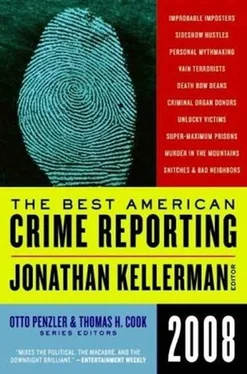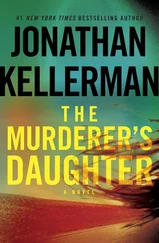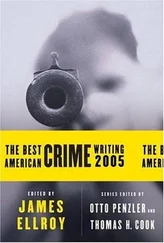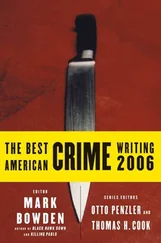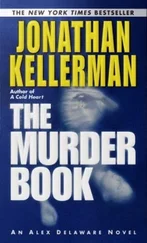“Even though we may not execute people by the masses, as they do in other countries, our government leaders bury people alive for life in cement tombs,” he writes. “It’s actually more human to execute someone than it is to torture them, year, after year, after year.”
SILVERSTEIN’S LAST TASTE of some kind of freedom came in the fall of 1987. Rioting Cuban prisoners broke into his special cell in the Atlanta federal penitentiary and set him loose. For one surreal week, he was able to roam the yard while the riot leaders dickered with federal negotiators over the release of more than a hundred prison staffers who’d been taken hostage.
Then the Cubans jumped him, shackled him and turned him over to the feds. Surrendering Silverstein had been high on the BOP’s list of demands for resolving the situation, right up there with releasing all hostages unharmed.
Contrary to the bureau’s expectations, Silverstein didn’t butcher any guards during his precious days of liberty. He didn’t harm anyone. He suggests the episode shows that he’s not the killing machine the BOP says he is, and that he could exist in a less restrictive prison without resorting to violence.
The bureau isn’t convinced. He killed Clutts.
Terrible Tommy says he’s changed. He claims to have gone 21 years without a disciplinary writeup. Other long-term solitaries go berserk, smearing their cells with feces and “gassing” their captors with shit-piss cocktails. Not him.
“The BOP shrinks chalk it up as me being so isolated I haven’t anyone to fight with,” he writes, “but they’re totally oblivious to all the petty BS that I could go off on if I chose to. I can toss a turd and cup of piss with the best of ’em if I desired. What are they going to do, lock me up?
“But I just have more self-control now, after 25 years of yoga, meditation, studying Buddhism and taking some anger-management courses. All that goes unacknowledged.”
McMurray says her brother has learned a great deal about patience and suffering over the years. “He’s more like the brother I knew on the outside years ago,” she says. “I have spoken with the guards who deal with him every day, and they don’t have a bad thing to say about him. It’s the ones in administration who are trying to make it as difficult as they can for him.
“But my brother has a spirit that is unbreakable. In Leavenworth, at least he could draw. It’s been more of a challenge for him in this situation, but he hasn’t let it break his spirit.”
The bureau doesn’t care about his spiritual progress. He killed Clutts.
Silverstein has told reporters that he wants to apologize to the families of the men he killed, “even though it was in self-defense.” He has recanted some oft-quoted lines from his interviews with Earley about “smiling at the thought of killing Clutts” and feeling the hatred grow every time he was denied a phone call or a visit. He says he regrets the grief he’s caused and no longer seethes with hatred.
The bureau is unmoved by his repentance. He killed Clutts.
Silverstein has been cut off from the operations of the Aryan Brotherhood for decades. His story is still told among the faithful, in an effort to keep his memory alive among the younger members, but he disputes that the group is a white supremacist organization. His own paintings include an ethnically diverse array of portraits. “I think it’s worth noting that Tommy is no longer a racist, if he ever was,” says Prison Legal News editor Wright.
The bureau could give fuck-all. He killed Clutts.
Twice a year, prison officials hold a brief hearing to review Silverstein’s placement in administrative segregation. For many years, the hearings were held in the corridor outside the Silverstein Suite in Leavenworth. Silverstein stopped attending because the result was always the same: no change. At ADX, he’s taken to filing grievances, claiming that the move has left him more isolated, with fewer privileges than ever before.
“I am being punished for good conduct under ploy of security reasons,” he wrote last year in a formal appeal of his situation. “The goal of these units is clearly to disable prisoners through spiritual, psychological and/or physical breakdown.”
In his response, Warden Wiley pointed out that Silverstein is provided with food and medical care, “daily contact with staff members” and access to television, radio and reading materials.
“It’s ridiculous to call a nameless guard that shoves a food tray through the hole in the door…a source of meaningful ‘human contact,’” Silverstein fired back. “I request placement in general population.”
He took his appeal to the regional office, then to headquarters, where it was swiftly denied. “You are serving three consecutive life terms plus 45 years for bank robbery and murder, including the murder of Bureau of Prisons staff,” an administrator noted. “You are a member of a disruptive group and an escape risk. Your heinous criminal and institutional behavior warrant a highly individualized and restrictive environment.”
Wiley declines to comment on Silverstein’s treatment at his prison. Last spring, a group from Human Rights Watch was allowed to tour certain areas of ADX. The group wasn’t let in Z-Unit, where Silverstein lives, or anywhere near A-Unit-the “hole,” where most disciplinary cases are housed. But they saw enough to realize that the staffers who bring meals “do not converse regularly, if at all, with the inmates.” Despite claims that clinical psychologists checked on prisoners every other week, “several inmates said they had not spoken to a psychologist in many months,” and such conversations tended to be brief.
The group also reported that many ADX prisoners are trapped in a catch-22 predicament-they’ve been sent there directly after sentencing but have never been provided any opportunity to “progress” to a less restrictive setting because of the nature of their crime. Every placement review finds that the “reason for placement at ADX has not been sufficiently mitigated.”
“No matter how well they behave in prison, they cannot undo the past crimes that landed them in prison, generally, and then ADX, specifically,” Human Rights Watch director Jamie Fellner wrote to BOP director Harley Lapin.
Some crimes, it seems, are beyond redemption.
Silverstein got a copy of the do-gooders’ report and immediately fired off a letter to the group, suggesting that they come see him in Z-Unit if they want the real story about the government’s “failed and draconian penal system.”
No one from the group has come to see him yet. Silverstein waits for them in his box within a box. He knows that the bureau just wants to bury him and that he turned the key himself. But he also knows he didn’t build that box all on his own.
His earliest possible date of release is eighty-eight years away. He has nothing but time.
ALAN PRENDERGAST is a staff writer at Westword and author of The Poison Tree: A True Story of Family Violence and Revenge. He teaches journalism at Colorado College and has written about crime and punishment for Rolling Stone , Outside , Los Angeles Times Magazine , and other publications.
Coda
I have written several stories about operations at ADX since the prison opened in 1994, but access has become a sore point since the September 11 attacks. The warden’s refusal to permit a face-to-face interview with Tommy Silverstein prompted me to ask now many journalists had been allowed to visit prisoners there since 2001. No one at ADX would tell me, but after several months a Freedom of Information Act request provided the answer: zero. Shortly after I reported that every inmate press interview request had been denied for almost six years, prison officials organized a “media tour”-but steered the visitors clear of Silverstein and Z Unit.
Читать дальше
